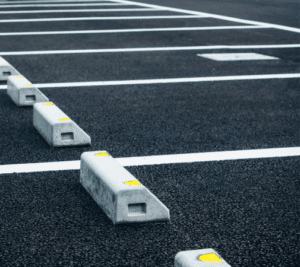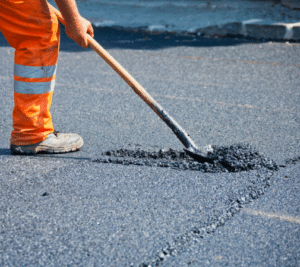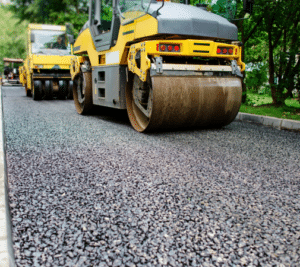There is no denying that homes can be expensive, and when all the maintenance costs are added up, they can be excessive. Homeowners looking to save money on their homes and reduce their spending on maintenance should consider adding an asphalt overlay to their driveway. Doing so can improve the home while also saving money. It is essential to understand what an asphalt overlay is and why it may be beneficial before making a decision.
There are many reasons why an asphalt overlay may be a good choice, and it is possible to accomplish it with the proper knowledge. Homeowners may be tempted to use resurfacing for their driveway, but this can cost more than expected. If homeowners are still determining whether to add an overlay to their driveway and are searching for the most cost-efficient option, they should look no further.
This article explains overlays and how they should be used. To gain further knowledge on the subject, continue reading.
What Is An Asphalt Overlay?
Put simply, an asphalt overlay is a new pavement placed over the top of an existing pavement section. It is similar to a tablecloth set over a used dining room table to hide all the scratches and damage from use. Overlays are an excellent way to improve the appearance of a driveway or parking lot while preserving the initial investment in the pavement. It is an economical and efficient way to upgrade the existing pavement while providing a long-lasting solution. Overlays are an ideal choice for homeowners looking to extend the life of their pavement without having to start from scratch.
How An Asphalt Overlay Is Applied
The application of an overlay typically depends on the project and what is necessary to ensure it is done correctly. To begin with, an asphaltic mill will shave down the top of the existing asphalt surface to match the existing pavement. Following this, base patching is done where the worst areas of the asphalt are removed and replaced.
After this, a street sweeper prepares the surface and applies a tack coat adhesive. Once the site has been adequately prepared, a leveling course of asphalt is applied to the surface. This helps with drainage issues on the current layer of asphalt, and the thickness of the leveling course will vary depending on the inconsistencies in the current layer. Finally, the asphalt surface layer is applied to complete the overlay.
The Pros and Cons Of Using An Asphalt Overlay
There are many factors to consider when considering whether or not to use an overlay. An asphalt overlay is one of the available options for repairing a driveway in rough shape. While there are many benefits to using an overlay, there are also some drawbacks. This article will provide an overview of the pros and cons of using an asphalt overlay so that individuals can make an informed decision about their pavement needs.
Pros
Asphalt overlay is a great way to extend the life of existing asphalt surfaces.
- The overlay cost is much cheaper than getting the asphalt replaced completely, making it a cost-effective solution.
- It can be applied quickly and efficiently and used to repair cracks, potholes, and other surface damage.
- Asphalt overlay helps to protect the underlying asphalt surface from further damage caused by water, ice, and UV rays. It also helps reduce the amount of noise created by traffic and provides a smoother, more attractive surface.
- Overlay can also create a new surface for parking lots, driveways, and other areas, making it an excellent choice for residential and commercial applications.
Cons
Although asphalt overlay has many benefits, there are also several drawbacks:
- It can be expensive, as it is more labor-intensive than other paving methods.
- The overlay can be more prone to cracking and further damage due to the added weight of the asphalt. The overlay can also be more challenging to repair if it becomes damaged, requiring more specialized tools and techniques.
- Asphalt overlays can be more susceptible to damage from extreme weather conditions, such as extreme cold and heat, which can cause the asphalt to crack or become brittle.
The Difference Between An Asphalt Overlay and A Resurfacing
Asphalt overlay and resurfacing are processes used to repair and maintain asphalt surfaces. Asphalt overlay involves laying a new layer over an existing surface, while resurfacing involves removing the current layer of asphalt and replacing it with a new layer. Overlay is a quicker and more cost-effective solution than resurfacing, as it does not require the removal of the existing layer. However, resurfacing can be a more comprehensive solution, allowing for a more even and durable surface.
Familiar Places Where Asphalt Overlay Is Used
Overlay is a standard method for resurfacing roads, driveways, and parking lots. It is often used to repair damage caused by weather, wear and tear, or general aging. Overlay can improve a paved surface’s overall look and feel.
It can create a smoother, more even surface and fill in cracks and potholes. Asphalt overlay is also used to improve the safety of a paved surface by providing better traction and visibility. It is often used in areas where vehicles, pedestrians, and cyclists share the same space. Asphalt overlay improves a paved surface’s durability, helping it last longer and resist damage from the elements.
Asphalt Overlay Cost
An overlay is typically the most cost-effective way to refresh a driveway or commercial property. The cost of an overlay varies depending on the supplier and the project’s scope. While other options are available, an asphalt overlay is often the most economical. To get an accurate quote on the cost of an asphalt overlay, contact Saguaro Asphalt. The best paving options start with Saguaro Asphalt’s asphalt services, where customers receive only the best and most attentive services. Contact Saguaro Asphalt to learn more today!



